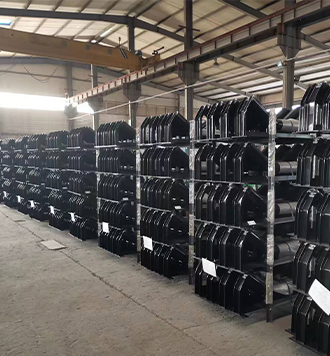 Afrikaans
Afrikaans  Albanian
Albanian  Amharic
Amharic  Arabic
Arabic  Armenian
Armenian  Azerbaijani
Azerbaijani  Basque
Basque  Belarusian
Belarusian  Bengali
Bengali  Bosnian
Bosnian  Bulgarian
Bulgarian  Catalan
Catalan  Cebuano
Cebuano  Corsican
Corsican  Croatian
Croatian  Czech
Czech  Danish
Danish  Dutch
Dutch  English
English  Esperanto
Esperanto  Estonian
Estonian  Finnish
Finnish  French
French  Frisian
Frisian  Galician
Galician  Georgian
Georgian  German
German  Greek
Greek  Gujarati
Gujarati  Haitian Creole
Haitian Creole  hausa
hausa  hawaiian
hawaiian  Hebrew
Hebrew  Hindi
Hindi  Miao
Miao  Hungarian
Hungarian  Icelandic
Icelandic  igbo
igbo  Indonesian
Indonesian  irish
irish  Italian
Italian  Japanese
Japanese  Javanese
Javanese  Kannada
Kannada  kazakh
kazakh  Khmer
Khmer  Rwandese
Rwandese  Korean
Korean  Kurdish
Kurdish  Kyrgyz
Kyrgyz  Lao
Lao  Latin
Latin  Latvian
Latvian  Lithuanian
Lithuanian  Luxembourgish
Luxembourgish  Macedonian
Macedonian  Malgashi
Malgashi  Malay
Malay  Malayalam
Malayalam  Maltese
Maltese  Maori
Maori  Marathi
Marathi  Mongolian
Mongolian  Myanmar
Myanmar  Nepali
Nepali  Norwegian
Norwegian  Norwegian
Norwegian  Occitan
Occitan  Pashto
Pashto  Persian
Persian  Polish
Polish  Portuguese
Portuguese  Punjabi
Punjabi  Romanian
Romanian  Russian
Russian  Samoan
Samoan  Scottish Gaelic
Scottish Gaelic  Serbian
Serbian  Sesotho
Sesotho  Shona
Shona  Sindhi
Sindhi  Sinhala
Sinhala  Slovak
Slovak  Slovenian
Slovenian  Somali
Somali  Spanish
Spanish  Sundanese
Sundanese  Swahili
Swahili  Swedish
Swedish  Tagalog
Tagalog  Tajik
Tajik  Tamil
Tamil  Tatar
Tatar  Telugu
Telugu  Thai
Thai  Turkish
Turkish  Turkmen
Turkmen  Ukrainian
Ukrainian  Urdu
Urdu  Uighur
Uighur  Uzbek
Uzbek  Vietnamese
Vietnamese  Welsh
Welsh  Bantu
Bantu  Yiddish
Yiddish  Yoruba
Yoruba  Zulu
Zulu non-drive pulley
Understanding Non-Drive Pulleys A Key Component in Mechanical Systems
Non-drive pulleys play a crucial role in various mechanical systems, particularly in the context of belt-driven machinery. While most people may primarily think of drive pulleys, which are responsible for transferring torque from a motor to a belt, non-drive pulleys hold equal importance in ensuring smooth operation and efficiency in a range of applications.
At its core, a non-drive pulley serves as a guide for the belt, redirecting its path as needed while also providing support to the overall system. These pulleys are typically mounted on the frame of the machine rather than on the motor itself. They can also act as tensioning mechanisms, helping to maintain proper belt tension, which is essential for optimal performance.
One of the primary functions of a non-drive pulley is to minimize wear and tear on the belt. By ensuring that the belt runs smoothly and remains aligned, non-drive pulleys help reduce friction and elongation, extending the lifespan of the belt and lowering maintenance costs. In many systems, the efficiency of the entire setup heavily depends on the effective functioning of these pulleys.
non-drive pulley

Non-drive pulleys come in various shapes and sizes to fit a wide range of applications. Their design can vary from simple idler pulleys to more complex configurations that accommodate different belt angles and tensions. For example, in conveyor systems, non-drive pulleys are often used to redirect transport belts, allowing for flexible layout designs while maintaining optimal performance.
Additionally, innovations in material science have led to the development of non-drive pulleys made from lightweight yet durable materials, such as plastic composites and aluminum. These advancements not only reduce the overall weight of the machinery but also improve corrosion resistance, making them more suitable for harsh environments.
In industries ranging from manufacturing to agriculture, the reliable performance of non-drive pulleys is essential. They contribute to the overall efficiency and reliability of machinery, which is why proper selection and maintenance are crucial. When a non-drive pulley fails, it can lead to increased downtime and unexpected repair costs.
In conclusion, non-drive pulleys are a vital component of mechanical systems that should not be overlooked. Their role in guiding belts, maintaining tension, and preventing wear highlights their importance in ensuring efficient operation. As technology continues to advance, the effectiveness and reliability of non-drive pulleys will only improve, thereby enhancing the performance of the machines that rely on them.
-
Revolutionizing Conveyor Reliability with Advanced Rubber Lagging PulleysNewsJul.22,2025
-
Powering Precision and Durability with Expert Manufacturers of Conveyor ComponentsNewsJul.22,2025
-
Optimizing Conveyor Systems with Advanced Conveyor AccessoriesNewsJul.22,2025
-
Maximize Conveyor Efficiency with Quality Conveyor Idler PulleysNewsJul.22,2025
-
Future-Proof Your Conveyor System with High-Performance Polyurethane RollerNewsJul.22,2025
-
Driving Efficiency Forward with Quality Idlers and RollersNewsJul.22,2025





























